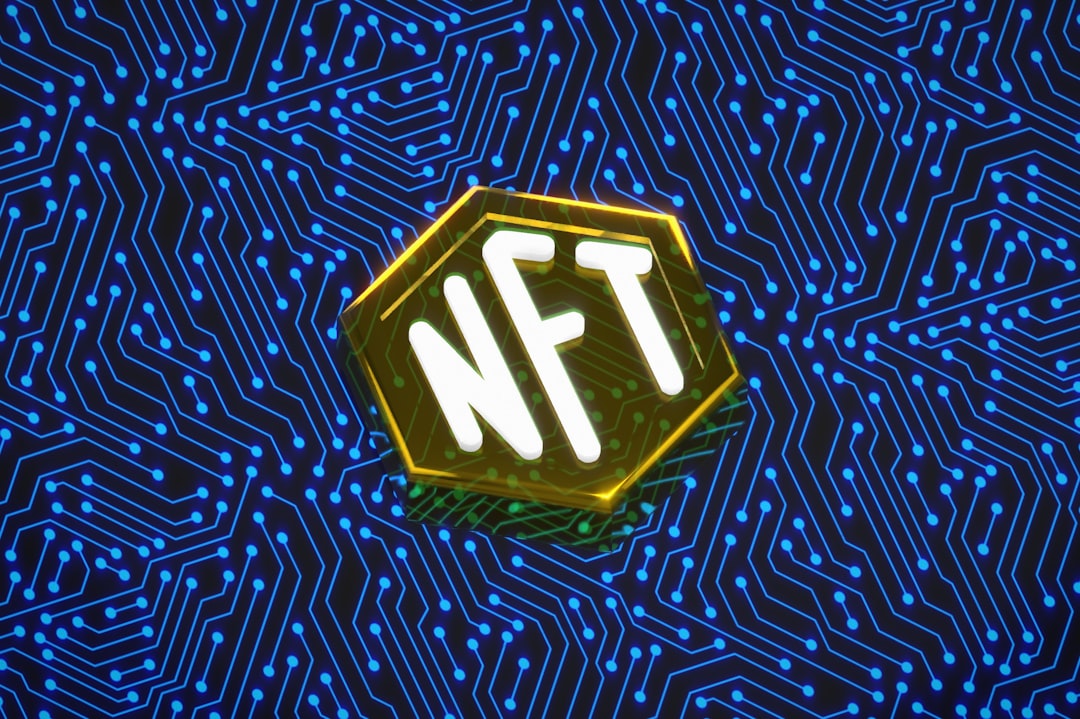Build a NFT Income Stream and Master Tax Rules

When people think of passive income, they often picture dividend stocks or rental properties. In the digital age, a new avenue has emerged that blends creativity, technology, and economics: non‑fungible tokens, or NFTs. While many NFT projects begin with hype and speculation, seasoned creators and investors have discovered systematic ways to generate a steady stream of revenue from these unique digital assets. By leveraging royalties, staking, and fractional ownership, an NFT can become a reliable source of passive cash flow provided you understand the mechanics and comply with tax obligations.
The core appeal of NFT passive income lies in its automation. Once an NFT is minted and sold, smart contracts on blockchain platforms can trigger payments automatically whenever the asset is resold. Unlike traditional royalties, which require manual tracking, NFT royalties are encoded into the contract code, ensuring that the original creator receives a predetermined percentage of each future sale. This mechanism turns a single creative effort into a multi‑year income source, provided the market remains interested in the asset.

Royalties, however, are only one facet of a robust NFT income strategy. Many platforms now support staking locking up NFTs in liquidity pools or yield‑generating protocols to earn additional tokens. Staking introduces a second layer of passive earnings: while the NFT earns royalties on resales, the staked position pays out rewards in the platform’s native token or a stablecoin. For collectors, staking can transform a static asset into a liquidity‑generating tool that boosts portfolio yield without sacrificing ownership.
Beyond royalties and staking, fractionalization unlocks another dimension. High‑value NFTs, such as limited‑edition digital art or virtual land parcels, can be divided into many smaller units, each sold to different investors. Fractional ownership spreads the purchase price and risk while allowing multiple parties to reap income from resale or staking of the underlying asset. This approach democratizes access to premium NFTs, enabling small investors to participate in high‑paying markets that would otherwise be out of reach.
Understanding Royalties and Smart Contracts
The magic of NFT royalties starts with the smart contract, a self‑executing code that lives on a blockchain. When you mint an NFT, you embed royalty parameters typically a percentage and a recipient address into the contract. Every time the NFT is transferred, the smart contract automatically splits the transaction value: the buyer pays the seller the full amount, and the protocol deducts the royalty fee, sending it to the creator’s wallet. Because the contract enforces the rule, there is no need for intermediaries or manual calculations. This transparency reduces friction and increases trust among buyers, which can lead to higher resale volumes and, consequently, more royalty income.
Royalty rates vary by marketplace and jurisdiction, but most major platforms allow creators to set rates between 5 % and 20 %. Some platforms also support dynamic royalties that adjust based on the sale price or the number of transfers. Creative professionals often pair these royalties with a unique marketing strategy: limited drops, exclusive collaborations, or time‑bound access to content that encourages early and repeated purchases.

Staking and Yield Farming on NFT Platforms
Staking is the process of locking up NFTs in a decentralized application (dApp) to earn rewards. Unlike traditional staking of fungible tokens, staking NFTs introduces an extra layer of complexity: the asset’s scarcity and utility can influence the yield. When you stake an NFT, the platform typically rewards you with the platform’s native cryptocurrency or a wrapped version of a popular token. The reward rate depends on the NFT’s rarity, the overall staking pool size, and the duration of the stake.
Yield farming takes this concept further. By combining NFT staking with liquidity provision adding your staked NFT to a liquidity pool you can earn double or even triple the returns. For example, on certain protocols, you might stake an NFT, receive a token representing your stake, and then lend that token in a liquidity pool to earn trading fees. Because the underlying NFT remains yours, you can withdraw it at any time, although early withdrawal may incur a penalty or reduce future rewards.
Strategically selecting which NFTs to stake is critical. Rare, high‑demand NFTs tend to generate higher rewards because they can be paired with more lucrative liquidity pools. Moreover, certain platforms offer tiered staking levels: the more NFTs you stake, the higher your reward multiplier. By combining royalties, staking, and yield farming, a creator can turn a single NFT into a multi‑channel income generator that operates 24 / 7.
Fractionalizing High‑Value NFTs for Diversified Income
Fractional ownership is a relatively new practice that enables multiple investors to buy shares of a single NFT. The process starts by creating a smart contract that divides the NFT into a set number of tokens each representing a fractional stake. Investors purchase these tokens using cryptocurrency or fiat, and each token entitles its holder to a proportion of any future royalties, staking rewards, or resale profits.
The benefits are twofold. First, fractionalization lowers the entry price for investors, making high‑quality digital assets more accessible. Second, it spreads the risk: if the underlying NFT’s value declines, the loss is distributed across all fractional holders. From a creator’s perspective, fractionalizing a highly sought‑after NFT can generate an immediate influx of capital, which can be used to fund new projects, pay collaborators, or reinvest in the platform’s ecosystem.
Legal and tax considerations become more intricate when fractional ownership is involved. Each fractional sale is a taxable event, and the IRS treats cryptocurrency and digital asset transactions as property. Therefore, tracking the cost basis, sale proceeds, and holding period for each fractional transaction is essential to accurately report capital gains or losses. Many creators use specialized accounting software or consult with tax professionals who specialize in blockchain assets to stay compliant.
When setting up a fractional NFT, creators must decide on the fraction size, the distribution method, and the governance model. Some platforms allow fractional holders to vote on decisions such as whether to sell the underlying NFT or reinvest proceeds adding an element of community ownership. Others opt for a simpler structure where the original creator retains full control over the NFT’s future while receiving all royalties and staking rewards.
Throughout the lifecycle of an NFT, from minting to resale, each of these mechanisms royalties, staking, fractional ownership can contribute to a steady stream of passive income. The key lies in balancing the potential returns against the operational complexity and tax obligations. By automating revenue through smart contracts, diversifying income through staking and yield farming, and democratizing access through fractionalization, creators can build a resilient income stream that adapts to market fluctuations and regulatory changes.
In practice, a successful NFT income strategy requires continuous learning and adaptation. Market dynamics shift as new platforms emerge and user preferences evolve. Staying updated on platform fee structures, changes in royalty policies, and evolving tax guidance ensures that your passive income remains compliant and optimized. Engage with the community, experiment with different asset types, and keep meticulous records of every transaction both for performance analysis and for tax reporting. With diligence and a strategic approach, the digital canvas can transform into a reliable source of passive revenue that supports your creative ambitions for years to come.

Jay Green
I’m Jay, a crypto news editor diving deep into the blockchain world. I track trends, uncover stories, and simplify complex crypto movements. My goal is to make digital finance clear, engaging, and accessible for everyone following the future of money.
Discussion (8)
Join the Discussion
Your comment has been submitted for moderation.
Random Posts

Zero to Crypto Riches Step-by-Step P2P Income Blueprint
Turn a modest crypto start into steady passive income with a step-by-step guide to P2P marketplaces. Skip day-trading hype and learn how direct trades, low fees, and smart risk control build lasting wealth.
3 months ago

Mastering Crypto Lending Your Path to Reliable Passive Income
Earn passive crypto income with lending higher rates, less trading. Pick reliable platforms, manage risk, unlock steady returns.
7 months ago

Mastering Investment Strategies To Protect Portfolio From Risk And Fraud
Learn how to blend diversification, risk control, and fraud safeguards into a single shield that protects your portfolio from loss and maintains confidence.
4 months ago

Exploring the Features of Top Staking Software Tools
Discover how to pick the best staking software beyond returns, focusing on security, risk control, and user friendly dashboards for reliable passive income.
2 months ago

Building Passive Wealth with Crypto Yield Tokens
Discover how crypto yield tokens turn your holdings into a steady income stream, blending blockchain liquidity with dividend, like returns.
5 months ago
Latest Posts

Tax Strategies for Long Term Passive Earnings
Learn how smart tax planning can boost your passive income: choose efficient vehicles, use shelters, time gains, and keep more of what you earn.
1 day ago

Passive Income Education Through Legal, Tax, and Risk Management
Turn a side hustle into lasting, hands, off wealth by mastering legal structure, tax strategy, and risk protection, the three pillars that safeguard capital and ensure steady dividends.
1 day ago

Crypto Exchange Basics for Steady Income
Build steady crypto income by defining clear goals, choosing the right exchange tools, and sticking to a disciplined strategy for consistent returns.
2 days ago

